Patient Resources: Not Just for “Newbies”
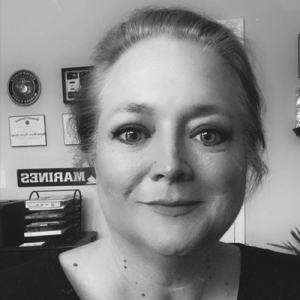 On April 23, 2002, my life completely changed – in an instant. Prior to that date, I was a Marine who ran six miles a day and didn’t know the meaning of the word “can’t”. My military service did leave me with some chronic pain issues, but it never really slowed me down. That April afternoon was just like any other day until a careless driver rear-ended me at a stop light and changed it all.
On April 23, 2002, my life completely changed – in an instant. Prior to that date, I was a Marine who ran six miles a day and didn’t know the meaning of the word “can’t”. My military service did leave me with some chronic pain issues, but it never really slowed me down. That April afternoon was just like any other day until a careless driver rear-ended me at a stop light and changed it all.
The bottom line is that if one area of my body is doing well, something else is definitely hurting. I haven’t had one pain-free moment in 18 years.
I have spent most of these years working as a web developer and graphic designer for pain-related organizations like AACIPM and consider myself to be very well-versed in just about every treatment or self-management option available. For people who have lived with chronic pain for so many years, this familiarity is actually a hindrance.
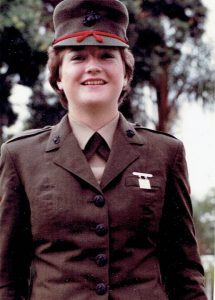 Early in my pain journey, I spent hours researching everything I could find to help myself. I will be the first one to try to help someone else find the resources they need. But, after so many years, I brush those things aside and say, “I tried that. It didn’t work.” That is a mistake. This journey is ever-changing as is our understanding of chronic pain.
Early in my pain journey, I spent hours researching everything I could find to help myself. I will be the first one to try to help someone else find the resources they need. But, after so many years, I brush those things aside and say, “I tried that. It didn’t work.” That is a mistake. This journey is ever-changing as is our understanding of chronic pain.
I admit it. I have been in a bit of a rut. Last year, I found myself declining in mobility and I resigned myself that this would be my future as I am not getting any younger. I had a wake-up call one day when I realized how much weight I had gained over the last ten years. Between multiple deaths in my inner circle, increasing workload, and spending so much of my time taking care of everyone else but myself, I looked in the mirror one day and realized that I didn’t recognize myself. I didn’t feel like “me.” I guess my excuse was that I couldn’t exercise so what could I do about it?
A dear friend helped me realize that if I don’t take care of myself, no one else will and somehow, even though I had heard that message many times before, I finally listened. I hadn’t really been eating more than one meal a day so I started with Weight Watchers. Just by paying attention and eating three meals a day, I lost 30 pounds in three months. Then I started doing what is referred to as “dirty” keto. Basically, loosely following a low-carb diet. More pounds started to come off.
What does this have to do with pain? More than you would think. I learned that keto helps with inflammation and migraines. I stumbled upon something that has literally changed my life over the last year.
 Between the weight loss (currently 62 lbs. and counting) and the decrease in the inflammation, I have seen a dramatic increase in my ability to walk. Last year, I averaged 600 steps per day. I can now walk 5,000-8,000 steps per day and find myself walking for exercise again. I set a goal to walk in a 5K next year.
Between the weight loss (currently 62 lbs. and counting) and the decrease in the inflammation, I have seen a dramatic increase in my ability to walk. Last year, I averaged 600 steps per day. I can now walk 5,000-8,000 steps per day and find myself walking for exercise again. I set a goal to walk in a 5K next year.
During the most recent Veterans Administration HealtheLiving Assessment, my rating moved from age 65 down to age 57 (I’m 54). I expect this will continue to improve and I’m looking forward to more positive results.
For so many years, as I collected pain resources for others, I paid little attention.
Now I am paying attention!
Three of the resources in our Patient Resources section have been very helpful to me during this current phrase in my pain journey.
Migraine Buddy App
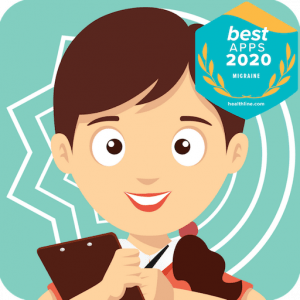 I downloaded this app a few months ago initially to review it for this article. I thought I would be looking at the technology and seeing how it might help others. I never imagined it would help me.
I downloaded this app a few months ago initially to review it for this article. I thought I would be looking at the technology and seeing how it might help others. I never imagined it would help me.
I found this app very easy to use and helpful in tracking all the potential triggers for an attack. It sends me reminders to update information as I’m experiencing an attack and encouragement as well. The app even tracks my sleep more accurately than my iPhone does and prompts me to confirm the times. It includes free reports I can share with my doctor as well as access to the Migraine Buddy Community with chat groups, support and advice. There is always someone to talk to when needed. The app is full of guides and tutorials with world-leading migraine experts.
Since I have actually been paying attention to my health now, I’ve been tracking my migraines so that I can discuss the changes that have taken place by following the keto diet and how I might make adjustments to further improve/prevent attacks.
The Migraine Miracle and Keto for Migraine
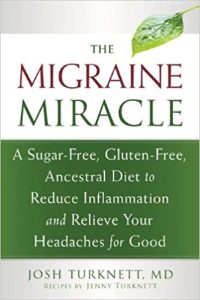 These books have been eye-opening for me. I never dreamed that a diet could affect my migraines or my other pain conditions in such a positive way. Dr. Josh Turknett lays out how the keto diet can affect not just weight loss, but also energy levels, brain fog (a huge frustration for me), improved sleep patterns and more.
These books have been eye-opening for me. I never dreamed that a diet could affect my migraines or my other pain conditions in such a positive way. Dr. Josh Turknett lays out how the keto diet can affect not just weight loss, but also energy levels, brain fog (a huge frustration for me), improved sleep patterns and more.
A typical keto diet can actually make migraines worse, so the books detail how to maximize the pros and minimize the cons. I think I’ll have to read these books several more times to digest all there is to learn–and I was surprised to receive links to more resources when I purchased the books.
I can report that all of my blood results are excellent, my migraines have been less frequent over the past few months (something I would never have noticed without using the app to track the attacks), and while my pain is most definitely still there, the brain fog is lessened. I no longer need naps in the middle of the day. I’m sleeping 6-8 hours in a row instead of 3-4 (if you live with pain, you know what a big deal this is)!
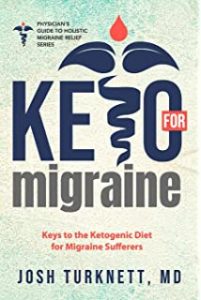 These books are a must-read for anyone who lives with pain–whether or not you are a migraineur.
These books are a must-read for anyone who lives with pain–whether or not you are a migraineur.
I would like to encourage anyone living with chronic pain–especially us “old-timers”–to explore what’s out there and try something new or even something you have tried before and thought wouldn’t work for you. We all know that there is no “magic pill” that will work for everyone. We have to develop the right comprehensive, integrative plan that will work for our situation–alongside our health care team.
If you are in a rut, what do you have to lose? You might be surprised by the results.
Trackbacks/Pingbacks